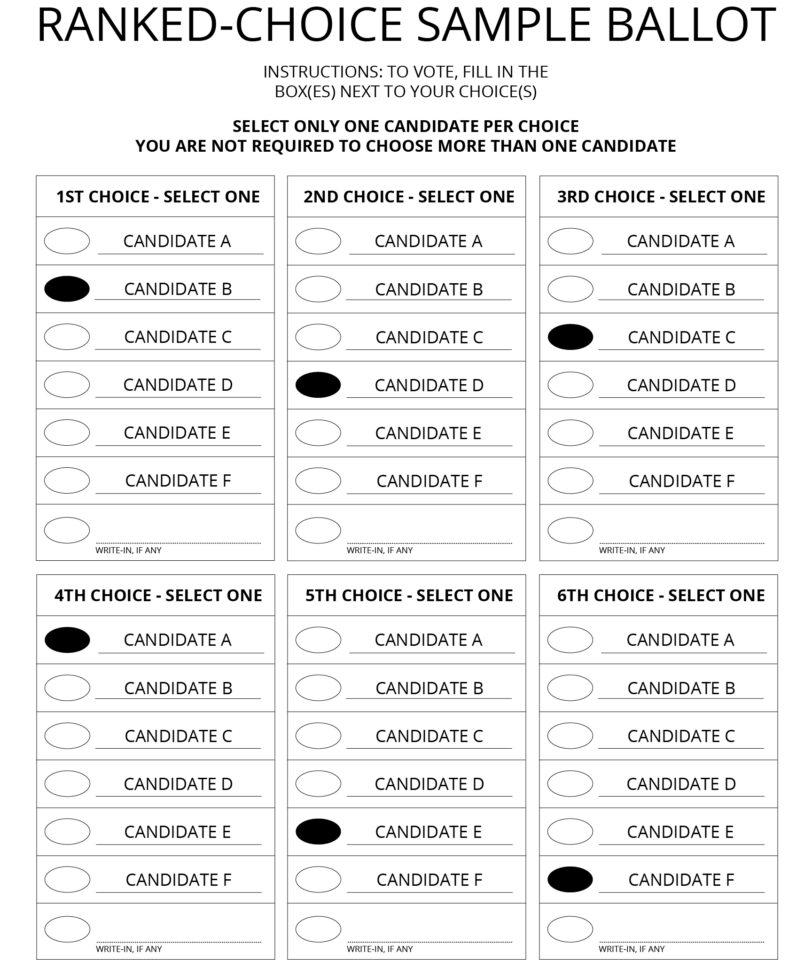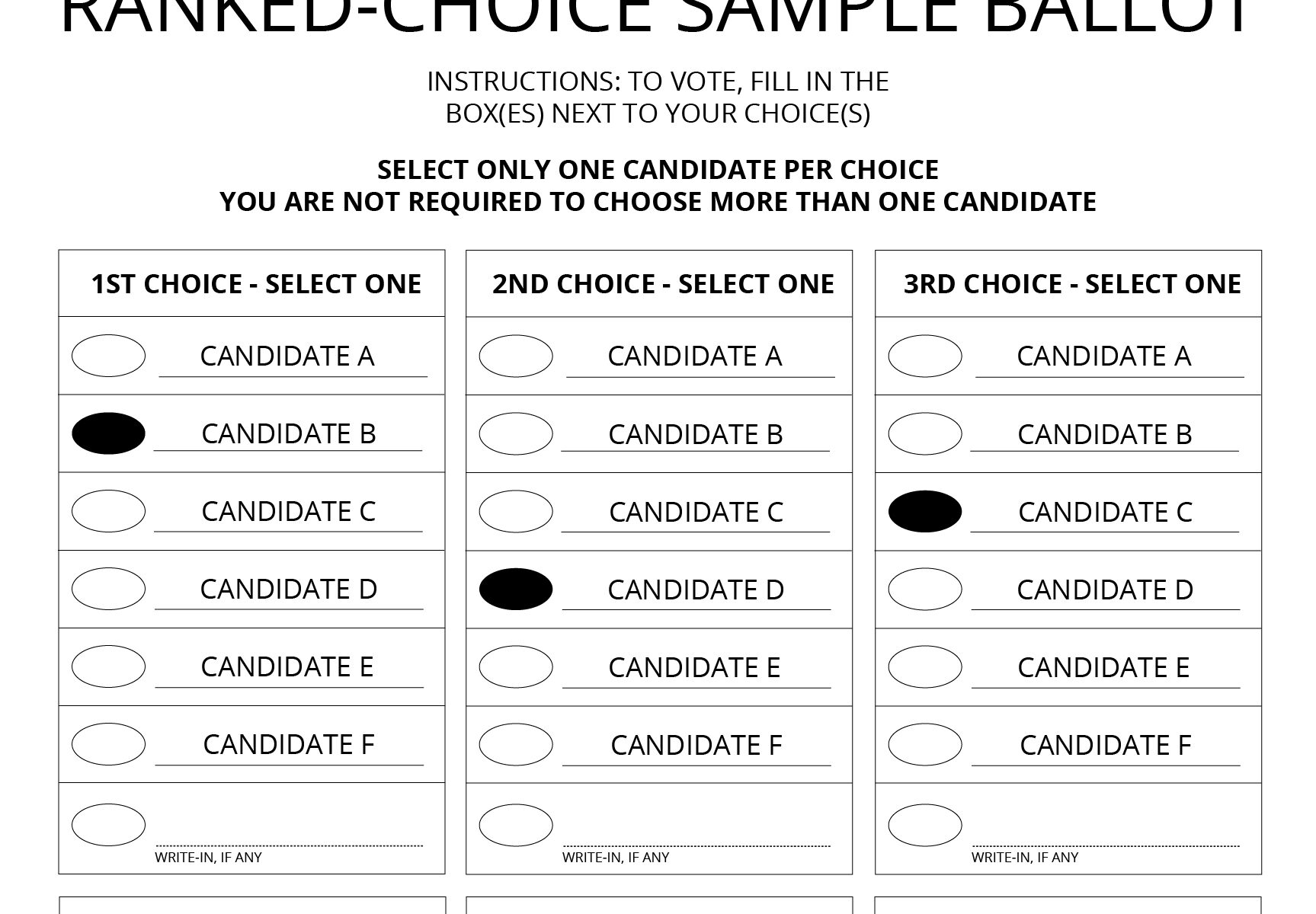
Ranked-choice voting, which was adopted by Minneapolis in 2010, is Minneapolis’ and St. Paul’s ballot format for their municipal elections on Tuesday, Nov. 2.
Minneapolis residents will vote by ranked-choice for mayor, city council, the Board of Estimate and Taxation, and the park and recreation board, while St. Paul residents will only vote by ranked-choice for mayor.
The ranked-choice process is fairly new to the Greater Twin Cities area and is not yet used in the majority of U.S. states, according to Ballotpedia. The same encyclopedia explained the six steps of this electoral system:
— Voters rank candidates in order of preference, with No. 1 being the voter’s preferred candidate. For example, this St. Paul sample ballot allows voters to rank their top six choices, although they are not required to fill out all six choices.
— When the voting period ends, first-choice votes are counted. If any candidate has won an “outright majority” of first-choice votes, that candidate wins the election and the process ends.
— In the case that no candidate won a majority of first-choice votes, the candidate with the least first-choice votes is dropped from the ballot.
— Any ballots with the dropped candidate marked as the first choice shift accordingly. The second choice becomes the first choice, the third choice becomes the second choice, and so on. For example, if a voter marked Candidate X as their first choice and Candidate Y as their second choice but Candidate X was eliminated, their ballot now counts as a vote for Candidate Y.
— Ballots are re-counted. The process ends if any candidate has an “outright majority” of first-choice votes.
— The process repeats itself until one candidate has won a majority.
A similar process is conducted for multi-winner elections. Citizens can visit FairVote to learn more about proportional ranked-choice voting when there are several winners.
Although ranked-choice voting may sound complicated at first, it has garnered many supporters. Ranked-choice proponents quoted on Ballotpedia listed benefits including the end of gerrymandering cycles, the elimination of “wasted” votes and the guarantee that “candidates with the most votes and broadest support win.”
Opponents of ranked-choice voting said it’s more confusing for voters to understand, there is little evidence it will change election outcomes and it seems incomplete because second- and third-choice candidates can get elected without another round of campaigning.
Regardless, Minneapolis and St. Paul residents will be better prepared to elect new mayors and more on Nov. 2 with basic knowledge about ranked-choice voting and information on each of the candidates.
Mia Laube can be reached at mia.laube@stthomas.edu.



